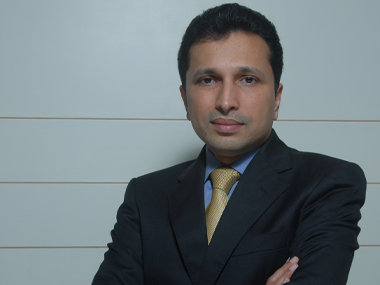Large investors are cautioning the government about the success of its proposed share sale of public sector banks to raise funds saying this might not be a cake walk given low investor appetite. “To ask them to go to the market (to raise funds) is amateurish,” Mahesh R Patil, co-CIO, Birla Sun Life Mutual Fund told Firstpost in an interview. Public sector banks have been promised about Rs 8,000 crore government capital in the Budget, which is nearly half of their requirement. This is much lower than Rs 11,200 crore the government committed for the current financial year. Of the committed amount, the government has only given Rs 6,990 crore this year. [caption id=“attachment_2158549” align=“alignleft” width=“380”]
 Mahesh Patil, co-chief investment officer, Birla Sun Life MF[/caption] The measly fund infusion comes in the face of a huge estimated capital requirement of about Rs 2.4 lakh crore to meet the Basel-III norms alone by March 2019. What is making the matters worse is the rising gross bad loans which as of December stand at about Rs 2.9 lakh crore. Including restructured loans, the NPAs form about 10 percent of the total loans of public sector banks. The government’s exhortation to public sector banks to tap the market for funds needs to be seen in this backdrop. Patil’s comments assume significance as mutual funds are huge investors in the market. “The government will have to find a way out,” Patil said. Birla Sun Life MF is overweight on private sector banks and selective on public sector banks, he said. Patil, though, expects a revival in the economy by the second quarter of the next financial year and a turnaround in corporate earnings by the second half. He therefore believes outlook for the Indian market is positive. However, the market is unlikely to move upwards steadily as was the case this year since it has already run up a lot, said Patil. “It is likely to be volatile, for one the market has already risen and also there are global factors,” he said. But he doesn’t expect the US rate increases to have a huge negative impact on India as the country will remain attractive and also since it has managed to rein in bigger macro issues such as current account deficit. The stock indices’ rise this year has been steady as investors pumped in money, hoping the Narendra Modi government will usher in reforms and revive the sagging economy. From 26 May, the BSE benchmark Sensex has risen 16.26 percent. The index hit an all-time high of 30024.74 on 4 March 2015, after the RBI unexpectedly cut its policy rate by 25 bps to 7.50 percent. From 13 September 2013, the day Modi was declared the BJP’s prime ministerial candidate, the rise has been a whopping 45.63 percent. What has boosted the sentiment for Indian shares this year is the lower crude oil prices, which brought down the inflation and the government’s import bill, and the reduction in the current account deficit, which stabilised the currency. Patil is bullish on sectors that have domestic focus such as auto, but advises retail investors to be cautious while picking up stocks. Data support from Kishor Kadam
Mahesh Patil, co-chief investment officer, Birla Sun Life MF[/caption] The measly fund infusion comes in the face of a huge estimated capital requirement of about Rs 2.4 lakh crore to meet the Basel-III norms alone by March 2019. What is making the matters worse is the rising gross bad loans which as of December stand at about Rs 2.9 lakh crore. Including restructured loans, the NPAs form about 10 percent of the total loans of public sector banks. The government’s exhortation to public sector banks to tap the market for funds needs to be seen in this backdrop. Patil’s comments assume significance as mutual funds are huge investors in the market. “The government will have to find a way out,” Patil said. Birla Sun Life MF is overweight on private sector banks and selective on public sector banks, he said. Patil, though, expects a revival in the economy by the second quarter of the next financial year and a turnaround in corporate earnings by the second half. He therefore believes outlook for the Indian market is positive. However, the market is unlikely to move upwards steadily as was the case this year since it has already run up a lot, said Patil. “It is likely to be volatile, for one the market has already risen and also there are global factors,” he said. But he doesn’t expect the US rate increases to have a huge negative impact on India as the country will remain attractive and also since it has managed to rein in bigger macro issues such as current account deficit. The stock indices’ rise this year has been steady as investors pumped in money, hoping the Narendra Modi government will usher in reforms and revive the sagging economy. From 26 May, the BSE benchmark Sensex has risen 16.26 percent. The index hit an all-time high of 30024.74 on 4 March 2015, after the RBI unexpectedly cut its policy rate by 25 bps to 7.50 percent. From 13 September 2013, the day Modi was declared the BJP’s prime ministerial candidate, the rise has been a whopping 45.63 percent. What has boosted the sentiment for Indian shares this year is the lower crude oil prices, which brought down the inflation and the government’s import bill, and the reduction in the current account deficit, which stabilised the currency. Patil is bullish on sectors that have domestic focus such as auto, but advises retail investors to be cautious while picking up stocks. Data support from Kishor Kadam
Tapping market may not solve public banks' capital woes: An MF exec explains why
Rajesh Pandathil
• March 18, 2015, 12:28:43 IST
Patil is bullish on sectors that have domestic focus such as auto, but advises retail investors to be cautious while picking up stocks
Advertisement
)
End of Article